Marans are a beautiful chicken breed, and Black Copper Marans are one of the most popular colors. These chicks have copper-like feathers layered on top of black feathers. While they’re beloved by many, they’re uncommon in the United States.
So, let’s take a look at the appearance, personality, and care requirements of these beautifully colored Marans to find out if they’re the right chickens for you.
[toc]
Black Copper Marans Overview
Before we discuss the details of this breed’s appearance and care, let’s look at some quick facts about the breed.
| Lifespan | Around 8 years |
| Weight | 6 – 8 pounds |
| Appearance | Copper feathers on top of black feathers |
| Egg Production | 3 per week, 150 – 200 per year |
| Egg Color | Dark brown |
| Good for Beginners? | Yes |
| Minimum Habitat Size | 4 to 8 square feet per chicken, but more is recommended |
| Price | $10 to $60 per chick |
Black Copper Marans History
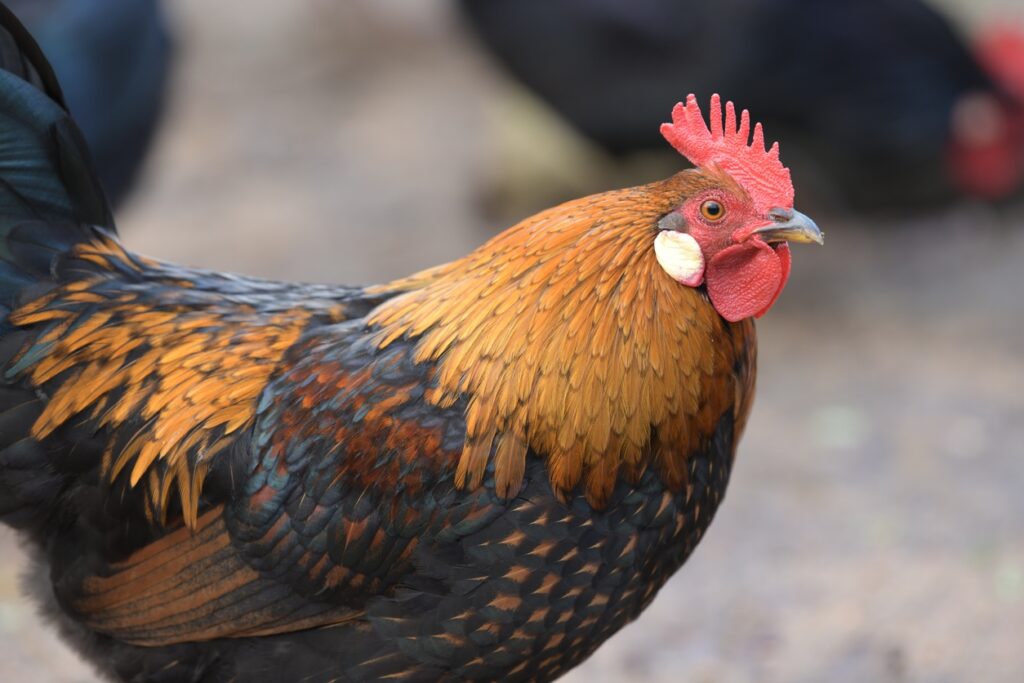
In the 1900s, Marans chickens came from a wetland area near a French town named Marans. Locals first called the chickens in their area “swamp chickens,” even though they would regularly keep the chickens for eggs.
However, sailors would often bring other birds to the island in exchange for supplies. The locals began breeding the new birds with the “swamp chickens,” which eventually resulted in the first Marans chickens.
Since so many different birds were in the town at the time, no one is entirely sure which birds make up the genetics of a Marans chicken. Yet, poultry enthusiasts began breeding them specifically to have better egg production.
For a while, this species was famous for the dark red eggs they laid, and locals called them “Maradaise fowl.” Then, in 1921, certain types of Marans became official breeds. In 1932, Black Copper Marans, also known as French Black Copper Marans, became a recognized color for the species.
At the end of World War II, there were barely any Marans left, but thanks to proper care and breeding, these chickens are still around to this day. Today, Black Copper Marans are still rare in the United States.
Black Copper Marans Appearance
Black Copper Marans are fittingly named since they have black and copper feathers. However, they look different depending on their stage in life.
What Color Eggs Do Black Copper Marans Lay?
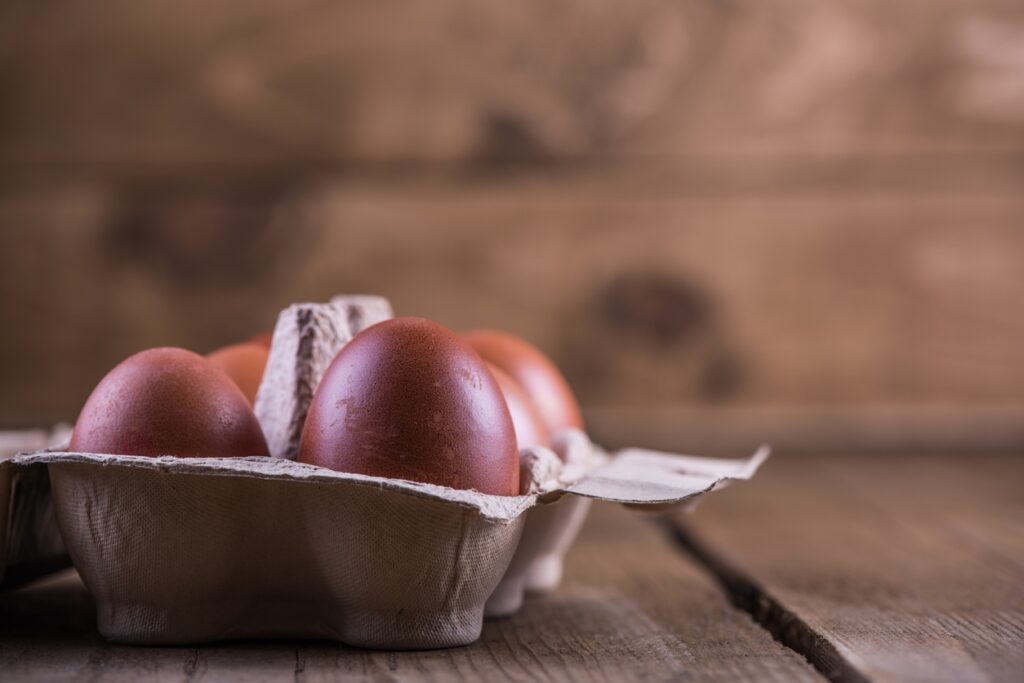
Black Copper Marans lay lovely dark brown eggs. These eggs are often described as the color of dark chocolate, and they can sometimes look dark red. They’re one of the most beautifully colored chicken eggs.
In general, the fewer eggs a chicken lays, the darker they’ll appear. Also, the eggs at the beginning of the laying season are usually the darkest, and they get lighter as the season goes on. It’s compared to “ink” running out over time.
Some eggs also have speckles on them, but it’s less common. Maran eggs are considered fairly large.
Black Copper Marans Chick Appearance
Black Copper Marans are even uniquely colored as chicks. They usually have soft, dark-colored feathers, such as black, dark brown, or red. Then, they have small patches of lighter colors across their bodies.
Black Copper Marans Adult Appearance
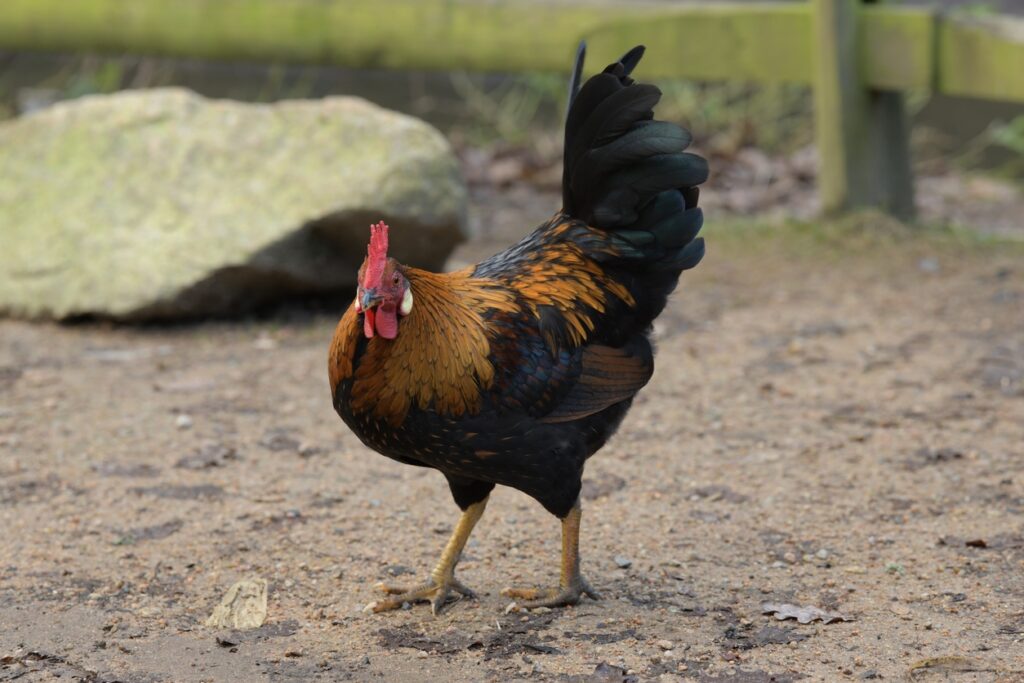
Black Copper Marans look similar as hens and roosters. Hens are smaller, but both of them have black feathers on their body with copper feathers on their wings and head. Their black feathers will sometimes have a green tint to them.
Their combs, waddles, and ear lobes are always red, and their eyes are orange. When looking at adult Marans from the side, you’ll notice that their bodies make a distinct V shape.
Size and Weight
Marans are considered standard sized chickens. Hens are usually about 6.5 pounds while roosters are a bit larger at 7 to 8 pounds.
Black Copper Marans Breed Standard
This color of Marans was first recognized by the American Poultry Association in 2011. So, it’s a fairy new breed in the United States.
The breed standard states that Black Copper Marans should have all the mentioned qualities above. The bird should be “long and strong,” and their body should look like an elongated V from the side. The leg diameter for roosters should be 22 millimeters while the hens will only be 20 millimeters.
Black Copper Marans Temperament
Black Copper Marans are a gentle breed. Their friendliness can vary from bird to bird, but it’s unlikely that they’ll want to be cuddly or sit on your lap.
Broodiness
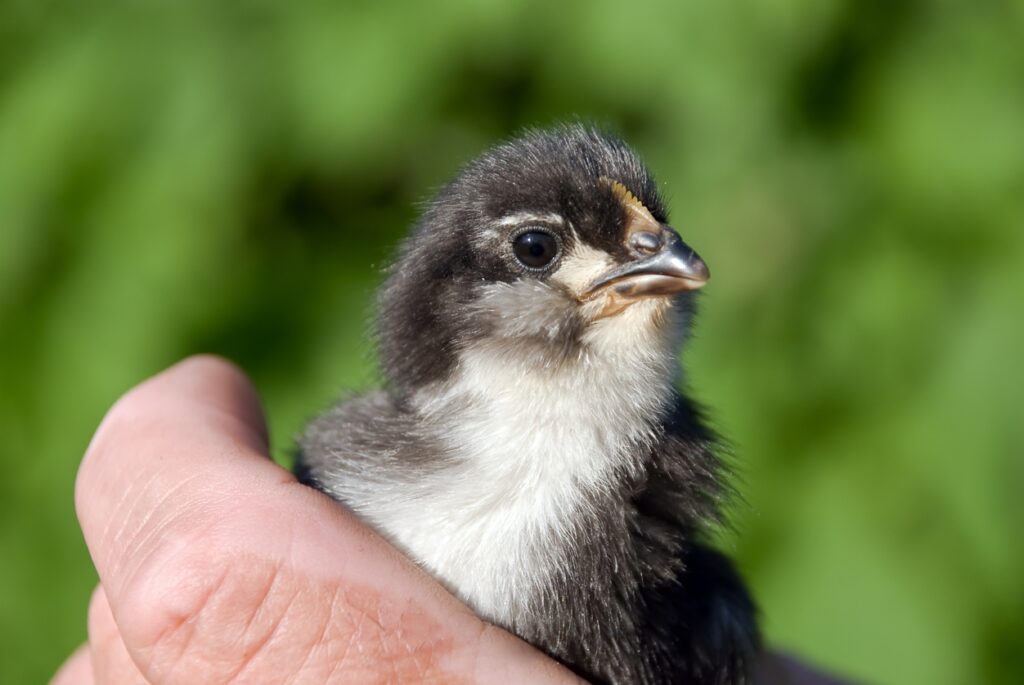
This trait also depends on the individual bird. Some Black Copper Marans will sit on their eggs and care for their chicks to some extent, but they’re known to only have average broodiness.
Noise Levels
These birds are usually very quiet, but it can vary between each chicken. It’s possible for some chickens to be louder and more “dramatic” than others. Usually their noise levels will be similar to their parents’.
Do Black Copper Marans Get Along with Other Animals?
Most Black Copper Marans are fine around other animals. However, this breed has some gamecock genes in them, so they could have a tendency to bully other animals.
Those dominant instincts are more common in roosters than hens. Yet, it might be best to only keep your chickens around other chickens if possible.
Black Copper Marans Care Requirements
Black Copper Marans can be beginner-friendly, but like all chickens, they have unique care requirements. Here are some things to note before buying these chickens.
Diet
Black Copper Marans need to eat a feed that has a minimum of 16% protein. So, most standard chicken feeds will work. It’s recommended to increase the minimum protein percentage during times when the chickens are stressed, such as when molting or caring for chicks.
This breed also likes to forage for food. So, if you let them roam, they can also find nutrients on their own. This can help them get a variety in their diets and keep them entertained. If you don’t give them lots of space to roam and explore, they could become overweight.
Seeds, bugs, and worms are just some things the chickens will snack on while they’re foraging.
Habitat Setup
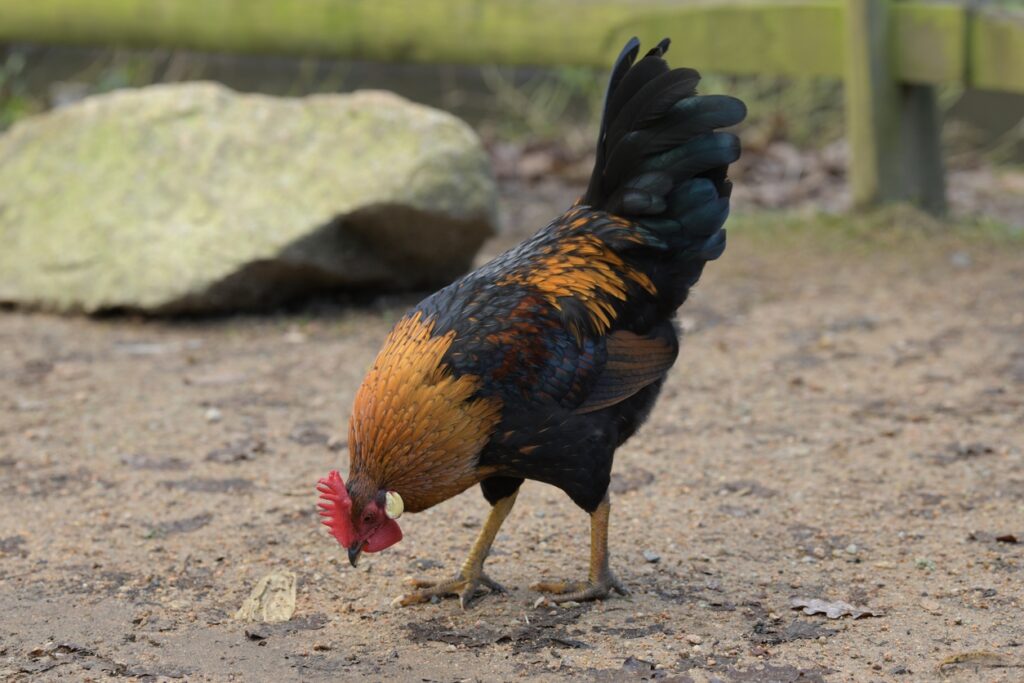
Marans are large chickens, so while a minimum of four to eight square feet per chicken can work, it’s recommended that you give them much more space. The more space you give them, the happier and healthier your chickens will be. Chickens with more space are also less likely to develop bad habits.
Each chicken should also have eight to ten inches of roost space in the coop. They might all share a roost when it’s cold outside, but in the summer, they will want space to spread out. Putting the roosts at different heights will also give them plenty of space to fly and explore as needed.
When you add nesting boxes to their habitat, a standard 12 inches x 12 inches box should suffice. One nesting box for every three birds is ideal.
You can keep your chickens confined to a space, but as mentioned earlier, they love to roam and forage. So, consider letting them free-range, even if it’s only at certain times. Free-range chickens rarely run away unless they feel threatened.
Temperature
These chickens are fairly tolerant of all weather conditions. Most do well in extreme cold as long as they have shelter to retreat to. Lots of shade in the summer is also essential.
However, hens tend to lay less eggs in colder climates. Finding different ways to store eggs can help the eggs from other months last longer. Always test the eggs if you’re unsure how old they are.
Also, roosters are more prone to frost bite than hens because they have very large combs. If you’re concerned, you can provide a coop heater for the coldest months.
Health Concerns
Luckily, these chickens also have very few health concerns. Marans are resistant to most diseases. It might be because of their swamp origins since they were raised in filthier conditions back then.
They also have cleaner habits than most chickens, which could be very beneficial to their health. Unlike most chickens, they tend to avoid walking through feces, which makes them less likely to get sick.
Yet, all chickens can get sick at times, so this breed is no different. Chickens can sometimes get parasites like lice, mites, and worms. Taking them in for health checkups and cleaning their coop regularly can help avoid that though.
Marans are also prone to obesity. So, make sure your chickens are moving around and getting regular exercise. Providing them with more space and chicken toys could help keep them in shape.
How to Breed Black Copper Marans
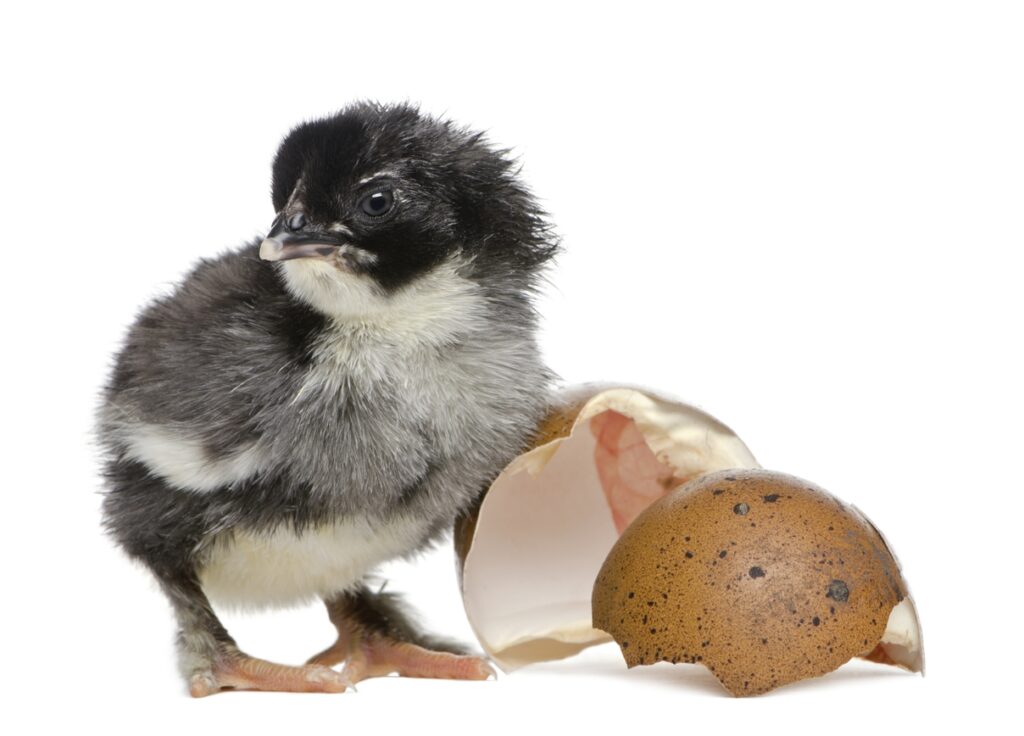
If you want to breed more Black Copper Marans, add a rooster to your coop. Then, your hens will begin laying fertilized eggs without you needing to interfere.
However, if you don’t want any fertilized eggs, don’t keep a rooster with the hens. That way, you’ll only collect eggs for food rather than creating more chickens. Plus, roosters are more likely to bully other animals, so it might b easier to care for your flock without a rooster in the mix.
Egg Production
Hens produce about three eggs per week. That means one chicken could lay 150 to 200 eggs per year.
If you buy eggs from someone else, be careful of scammers. Since the color of the eggs can vary, the breeder might show you a dark red egg, but then give you the lighter colored eggs because they’re less desirable. So, make sure you go to a reputable breeder, and don’t be afraid to ask detailed questions about the chickens.
Other Types of Marans
Black Copper Marans are only one type of this majestic breed. While they are one of the most desirable, there are plenty of others that are just as easy to raise.
Here are some other types of Marans:
- Cuckoo
- Golden Cuckoo
- Black
- White
- Birchen
- Black Copper Neck
- Wheaten
- Colombian
- Black Tailed Buff
The main difference between all these Marans is their color. Despite their unique appearances, their temperaments and care requirements are quite similar. So, if you can’t find a reputable breeder for Black Copper Marans, consider buying one of these other variants instead.
Are Black Copper Marans the Right Chickens for You?
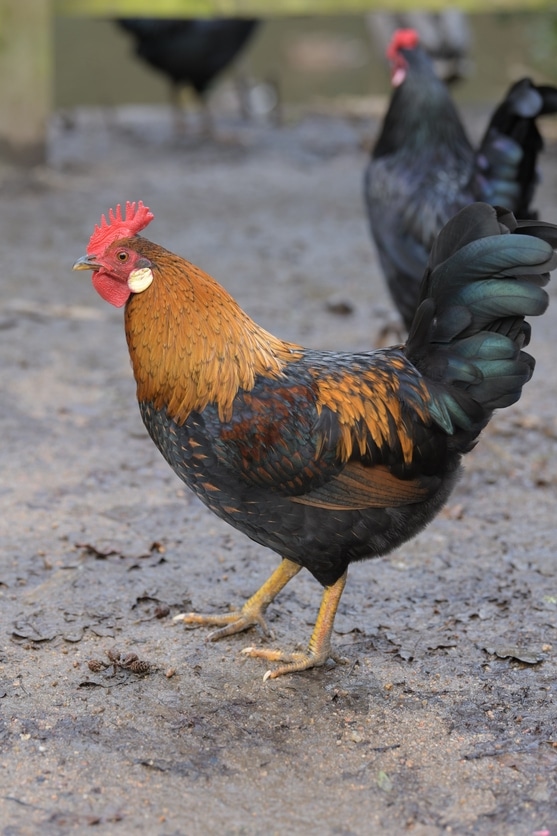
If you’re blown away by the beautiful feathers and eggs of the Black Copper Marans, then they might be the right chickens for you. They’re great for all types of chicken keepers, even beginners.
They’re easy to care for with minimal health problems. Plus, they have a frequent egg production that will give you beautiful red/brown eggs.
As long as you have enough space to keep some chickens, Black Copper Marans could be the right choice for you. However, any of the Marans could also make great birds for beginners.